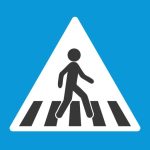Orthorexia Nervosa: When Healthy Eating Becomes an Eating Disorder

In a surprising twist of biology, healthy eating can become an unhealthy eating disorder. A preoccupation with eating only “pure” or healthy foods can lead to something called orthorexia nervosa. Orthorexia nervosa is not recognized as a distinct eating disorder at this time, but there is plenty of evidence it is a problem.
A comprehensive review of the current scientific literature on orthorexia was recently published by the journal Nutritional & Lifestyle Psychiatry. The authors begin by distinguishing between orthorexia, which they define as a preoccupation with a meal’s “sourcing, preparation and nutritional content,” and orthorexia nervosa, which the authors describe as:
[…] a more severe and clinically significant form of this obsession, characterized by intense anxiety, distress, and impairments in daily functioning resulting from extreme dietary restrictions.
The authors focus their research on the more severe form of the eating disorder, orthorexia nervosa. Among the problems orthorexia nervosa causes are:
- severe nutritional deficiencies
- electrolyte imbalances
- disturbances in metabolic functions
- isolation
- anxiety
- depression
- body dysmorphic disorder
- impairment in social and occupational functioning
Another review of the literature on orthorexia nervosa notes that symptoms overlap with anorexia nervosa, obsessive-compulsive disorder (OCD), obsessive-compulsive personality disorder (OCPD), and other disorders. Figure 1 shows a Venn diagram illustrating the overlap between these conditions.
Figure 1: Venn diagram illustrating the overlapping characteristics between orthorexia, anorexia, and OCD. Image from Neuropsychiatric Disease and Treatment used under Fair Use: Commentary.
In an article for Parkview Health, sports dietician Sami Kauffman, RD, cautions against letting healthy eating get to the point where it’s detrimental to your physical and psychological health. She identifies some warning signs:
- Compulsive checking of ingredient lists and nutritional labels.
- Cutting out an increasing number of food groups such as all sugar, carbohydrates, dairy, meat, animal products, etc.
- Showing high levels of distress when “safe” or “healthy” foods aren’t available.
- Obsessive following of food and “healthy lifestyle” accounts online or on social media.
If you or someone you care about is taking healthy eating to an unhealthy extreme, help is available. The National Alliance for Eating Disorders has a helpline at 1-866-662-1235. The National Association for Anorexia Nervosa and Associated Disorders (ANAD) maintains a helpline at 1-888-375-7767.
Written by Steve O’Keefe. First published January 11, 2024.
Sources:
“Orthorexia and Orthorexia Nervosa: A Comprehensive Examination of Prevalence, Risk Factors, Diagnosis, and Treatment,” Nutritional & Lifestyle Psychiatry, September 2023.
“The clinical basis of orthorexia nervosa: emerging perspectives,” Neuropsychiatric Disease and Treatment, February 2015.
“The hidden dangers of a ‘healthy addiction’ to clean eating,” Parkview Health, January 4, 2024.
Image Copyright: alfazetchronicles.




